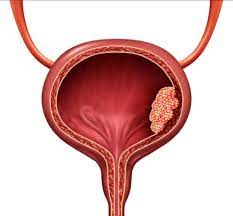Bladder cancer is a type of cancer that begins in the tissues of the bladder, the hollow organ in the lower abdomen responsible for storing urine. Most bladder cancers start in the urothelial cells that line the inside of the bladder and can range from low-grade, slow-growing tumors to aggressive, life-threatening conditions. It is one of the most common cancers affecting the urinary tract and is more frequently diagnosed in older adults, particularly men.
Common Symptoms
One of the earliest and most noticeable symptoms of bladder cancer is blood in the urine, medically known as hematuria. This can range from visible red or brown discoloration to microscopic traces detected only through a urine test. Other symptoms may include frequent urination, pain or burning during urination, a strong urge to urinate even when the bladder is not full, and, in more advanced cases, pelvic pain or lower back discomfort. These symptoms are not exclusive to bladder cancer, so it’s crucial to seek medical evaluation if they persist.
Risk Factors
Several factors increase the risk of developing bladder cancer. Smoking is the most significant, as harmful chemicals in tobacco are filtered by the kidneys and passed through the bladder, damaging its lining over time. Occupational exposure to certain industrial chemicals, especially in dye, rubber, leather, and textile industries, also increases the risk. Chronic urinary tract infections, long-term use of urinary catheters, exposure to arsenic in drinking water, and a family history of bladder cancer are additional contributing factors. Men are more prone than women, and the risk increases with age.
Diagnosis and Staging
To diagnose bladder cancer, doctors may use a combination of urine tests, imaging studies such as CT urograms or ultrasounds, and a cystoscopy, which involves inserting a thin tube into the bladder to visually inspect the lining. A biopsy is often taken during cystoscopy to confirm the presence and type of cancer. Once diagnosed, the cancer is staged to determine how deeply it has invaded the bladder wall and whether it has spread to nearby tissues or organs. This staging is essential in guiding treatment decisions.
Treatment Options
Treatment for bladder cancer depends on the stage, grade, and overall health of the patient. For early-stage, non-muscle-invasive bladder cancer, a common approach is transurethral resection of the bladder tumor (TURBT), often followed by intravesical therapy, where medications like BCG or chemotherapy are delivered directly into the bladder. For more advanced cases involving muscle invasion, treatment may require a partial or complete cystectomy (removal of the bladder), often combined with systemic chemotherapy or radiation therapy. Immunotherapy and targeted therapy options are also increasingly used, especially for recurrent or metastatic cancer.
Life After Diagnosis
Living with or after bladder cancer treatment can present physical and emotional challenges. Patients who undergo bladder removal may require urinary diversion methods, such as a urostomy or continent pouch. Ongoing follow-ups, imaging, and cystoscopies are necessary to monitor for recurrence. Support from healthcare providers, nutritionists, counselors, and patient groups can significantly help individuals adjust and maintain a good quality of life.
Prevention and Awareness
While not all cases of bladder cancer are preventable, certain lifestyle choices can reduce the risk. Quitting smoking is the single most important preventive measure. Avoiding exposure to known industrial carcinogens, drinking plenty of fluids to flush out potential toxins, and managing chronic urinary conditions are also recommended. People with a high risk—due to family history or occupational exposure—should consider regular checkups and early screening.
Conclusion
Bladder cancer is a serious health concern, but with early diagnosis and appropriate treatment, many patients can achieve good outcomes. Recognizing the signs and understanding the risk factors are the first steps toward timely intervention. As with many cancers, awareness, lifestyle modifications, and routine health checkups play a vital role in prevention and management.

